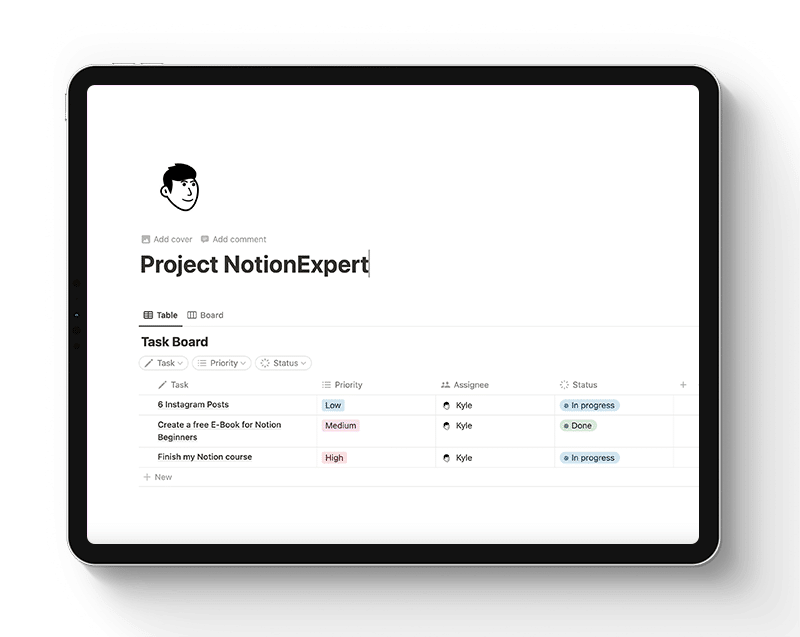Struggling to decide between Notion vs Todoist? You’ve landed on the right page.
With Todoist’s longstanding reputation as a reliable task management tool since 2007, and Notion’s rapid rise to prominence as an all-in-one workspace, the choice between the two isn’t straightforward. In this article, we delve into the nitty-gritty of both Todoist and Notion, comparing their strengths and weaknesses.
THE QUICK ANSWER: Todoist is for personal to-do lists, while Notion is a comprehensive workspace for organizing information, managing projects, and collaborating.
Notion vs Todoist – The Comparison
Notion and Todoist bear several resemblances, offering easy task management, progress tracking, and team collaboration. However, fundamental distinctions exist beneath these superficial similarities. Let’s take a more detailed look at what Notion and Todoist bring to the table, and even explore other potential alternatives to consider.
Notion: The All-in-One Workspace
- Price: Complimentary with advanced features from $8/user/month
- Capterra Rating: 4.7/5
Originally conceptualized as a note-taking tool, Notion has evolved into a comprehensive workspace where teams can consolidate their work, eliminating the need for multiple tools.
The versatility of Notion has won the hearts of many. Similar to Todoist, Notion supports task management with lists and Kanban boards, but that’s merely scratching the surface. Notion opens up an array of ways to organize your tasks and documents, providing nearly limitless possibilities. You can utilize it as a knowledge base app, collaborate on documents, manage your product roadmap, even establish a website, and more.
However, with a plethora of features comes a steep learning curve. Those transitioning from Todoist to Notion might initially feel overwhelmed by the multitude of menus and options, and may need some time to familiarize themselves with the platform.
Why Notion could be your preferred choice over Todoist:
- Notion is more adjustable and customizable than Todoist, boasting a broader range of features.
- Notion can function not only as a project management tool but also as a wiki and a database, allowing you to replace not only Todoist, but also tools like Google Docs, Airtable, and more.
- Notion provides more extensive collaboration features.
- Notion offers more robust features for businesses and large enterprises, such as advanced permission management, SCIM API, and more.
Notion Templates
If you’re struggling to get started with Notion, check out our range of both Free and Premium Notion Templates.

Todoist: The Task Management Specialist
- Price: Free, with advanced features starting from $4/user/month
- Capterra Rating: 4.6/5
While both Todoist and Notion support task management, Todoist provides a simpler, more streamlined experience. It offers an easy-to-use interface, supplemented with a host of features to keep you organized and on top of your tasks.
With Todoist, you can create tasks, assign due dates and priorities, and organize them into projects and sub-tasks. It also offers various productivity features like recurring tasks, reminders, labels, and filters.
Being a tool focused solely on task management, Todoist demands minimal customization or setup. It can serve as an excellent solution for small teams and individuals who do not require the broader range of features that Notion offers, such as creating notes, wikis, and databases.
Why Todoist might be your preferred choice over Notion:
- Todoist is fully optimized for task management and doesn’t try to juggle too many functions at once.
- Todoist is easier to get started with, with initial setup requiring minimal configuration.
- Todoist offers fewer features and options, helping it maintain a clean, clutter-free interface.
Notion vs Todoist – The Final Answer
While both Todoist and Notion offer task management functionality, the critical distinction lies in the breadth of their capabilities. Todoist is a simple and efficient tool for managing personal to-do lists, while Notion is a more comprehensive workspace that allows users to organize information, manage projects, collaborate with others, and create custom workflows.
We hope this article has simplified your decision-making process. Try out both and see which one suits your needs best.
